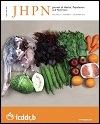Nutritional Outcomes Related to Household Food Insecurity among Mothers in Rural Malaysia
DOI:
https://doi.org/10.3329/jhpn.v31i4.20031Keywords:
Household food insecurity, Obesity, Overweight, MalaysiaAbstract
During the past two decades, the rates of food insecurity and obesity have risen. Although a relationship between these two seemingly-paradoxical states has not been repeatedly seen in men, research suggests that a correlation between them exists in women. This study examines nutritional outcomes of household food insecurity among mothers in rural Malaysia. A cross-sectional survey of low-income households was conducted, and 223 households with mothers aged 1855 years, who were non-lactating, non-pregnant, and had at least one child aged 212 years, were purposively selected. A questionnaire was administered that included the Radimer/Cornell Scale, items about sociodemographic characteristics, and anthropometric measurements. Of the households, 16.1% were food-secure whereas 83.9% experienced some kind of food insecurity: 29.6% of households were food-insecure, 19.3% contained individuals who were foodinsecure, and 35.0% fell into the child hunger category. The result reported that household-size, total monthly income, income per capita, and food expenditure were significant risk factors of household food insecurity. Although there was a high prevalence of overweight and obese mothers (52%) and 47.1% had at-risk waist-circumference (?80 cm), no significant association was found between food insecurity, body mass index, and waist-circumference. In conclusion, the rates of household food insecurity and overweight and obesity were high in the study population, although they are looking paradoxical. Longitudinal studies with larger sample-sizes are recommended to further examine the relationship between food insecurity and obesity.
DOI: http://dx.doi.org/10.3329/jhpn.v31i4.20031
J HEALTH POPUL NUTR 2013 Dec; 31(4): 480-489
Downloads
541
1322

